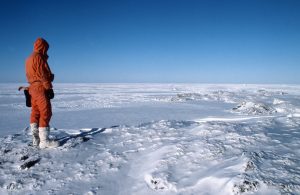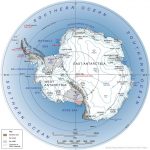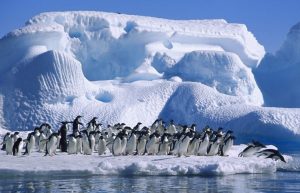naval officer

 Captain Charles Wilkes was an American naval officer, ship’s captain, and explorer. During an exploring expedition, authorized by the May 18, 1836 act of the Congress, Wilkes set out to explore the southern oceans. Congress didn’t expect his expedition to find anything amazing, but that is where they were wrong. His group set out in 1838, and it was during this expedition that Wilkes spotted the coast of Antarctica. The group had sailed around South America to the South Pacific, and after spotting Antarctica, decided to explore a 1,500 mile stretch of it’s eastern coast. The area later became known a Wilkes Land. In 1842, the expedition returned to New York, after having circumnavigated the globe. Wilkes wasn’t the first explorer to look at Antarctica, however. It was discovered by European and American explorers, and in the February 1821, American John Davis became the first person to land on the continent, coming in at Hughes Bay on the Antarctic Peninsula.
Captain Charles Wilkes was an American naval officer, ship’s captain, and explorer. During an exploring expedition, authorized by the May 18, 1836 act of the Congress, Wilkes set out to explore the southern oceans. Congress didn’t expect his expedition to find anything amazing, but that is where they were wrong. His group set out in 1838, and it was during this expedition that Wilkes spotted the coast of Antarctica. The group had sailed around South America to the South Pacific, and after spotting Antarctica, decided to explore a 1,500 mile stretch of it’s eastern coast. The area later became known a Wilkes Land. In 1842, the expedition returned to New York, after having circumnavigated the globe. Wilkes wasn’t the first explorer to look at Antarctica, however. It was discovered by European and American explorers, and in the February 1821, American John Davis became the first person to land on the continent, coming in at Hughes Bay on the Antarctic Peninsula.
Over the next century, many nations, including the United States, wanted to stake their territorial claims to portions of the frigid continent. I’m sure they all had the same idea for its use. Obviously, it was not going to be a place where people were going to live for any length of time…at least not at first. Scientists do spend quite a bit of time there now, but back then, the necessary facilities and equipment were not available.
Finally, in the 1930s, conflicting claims finally led to international rivalry, and the United States, which led the world in the establishment of scientific bases, enacted an official policy of making no territorial claims while recognizing no other nation’s claims. While it didn’t immediately solve the conflict then, it probably set in 
 motion, the 1959 Antarctic Treaty that made Antarctica an international zone, set guidelines for scientific cooperation, and prohibited military operations, nuclear explosions, and the disposal of radioactive waste on the continent. It’s sometimes strange to think about a continent that has really no owner, or rather is owned by the world, and yet even in modern times we have another such place…the International Soace Station. It’s nice to know that there are some things that we can share globally and actually get along.
motion, the 1959 Antarctic Treaty that made Antarctica an international zone, set guidelines for scientific cooperation, and prohibited military operations, nuclear explosions, and the disposal of radioactive waste on the continent. It’s sometimes strange to think about a continent that has really no owner, or rather is owned by the world, and yet even in modern times we have another such place…the International Soace Station. It’s nice to know that there are some things that we can share globally and actually get along.

